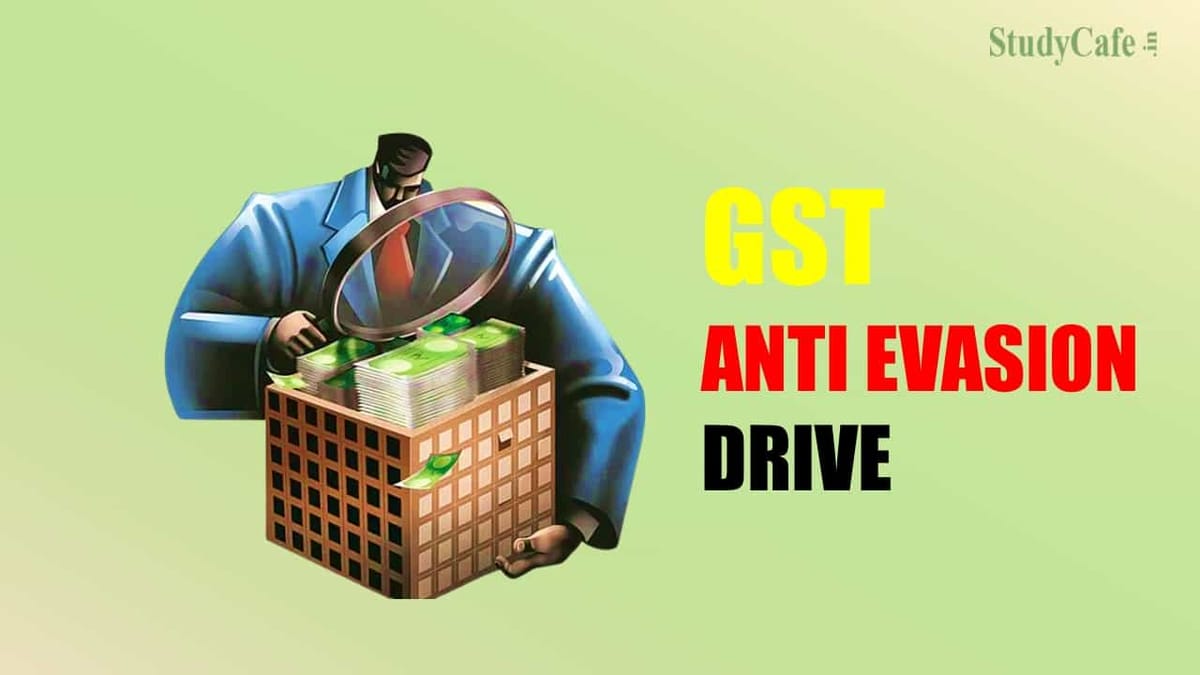Reetu | Nov 10, 2022 |

GST Department Steps up Anti Evasion Drive
The Central Board of Indirect Taxes and Customs (CBIC), which regulates the goods and services tax (GST) system, has stepped up its anti-evasion drive and begun a process of sending show-cause notices to thousands of organisations for alleged tax evasion or underpayment.
According to reports, out of the 34,000 cases that were examined for tax evasion in 2017–18, the year that the comprehensive indirect tax was implemented, it has already given notices in around 20,000 of those cases. The tax agency estimates that the firms committed Rs 2,000 crore in tax evasion over the year. According to the sources, notices are also being sent to a second batch of 35,000 cases for the 2018–19 financial year.
A senior official stated, “Based on their explanation, we will evaluate whether the demand needs to be confirmed or the show cause notice needs to be closed.”
According to the official, 95% of the 34,000 instances chosen for 2017–18 based on risk indicators have undergone full investigation, and in 50%–60% of those cases, justifications for short tax payments have been requested.
In order to prevent fraudulently claiming input tax credits (ITC) and tax evasion, the CBIC is intensifying its scrutiny and audit of GST returns. This will increase tax receipts through higher compliance and delay the rationalisation of the GST rate until 2024.
The chosen business entities are being examined to determine whether the data submitted by companies about input supplies, output supplies, input tax credits, and tax payments is consistent.
The taxpayer is hardly ever involved in the scrutiny process, and data from a variety of sources, including the GST Network, the Advanced Analytics in Indirect Taxation, the Directorate General of Analytics and Risk Management, and the e-way bill site, among others, is used instead. These companies’ income tax payments are added up in the end to see if there is a discrepancy or not.
GST collections show that increased inspection and audit are encouraging higher compliance. In the first seven months of the current financial year, average monthly GST collections increased to Rs 1.49 trillion/month from Rs 1.23 trillion/month for the entirety of FY22. Higher GST mop-up might result in the Center collecting up to Rs 1.5 trillion more in Central GST (CGST) receipts than projected in FY23, while states collectively will snag a little more than that, bolstering crucial funding for programmes.
Prior to the implementation of the GST in July 2017, the revenue neutral rate (RNR) for the tax was 15–15.5%, however the current average GST rate is around 11.5%.
Due to the numerous assembly elections in 2023 ahead of the national elections in April–May 2024, the suggested GST slab rationalisation intended to raise the average GST rate will probably be postponed till 2024.
In case of any Doubt regarding Membership you can mail us at contact@studycafe.in
Join Studycafe's WhatsApp Group or Telegram Channel for Latest Updates on Government Job, Sarkari Naukri, Private Jobs, Income Tax, GST, Companies Act, Judgements and CA, CS, ICWA, and MUCH MORE!"